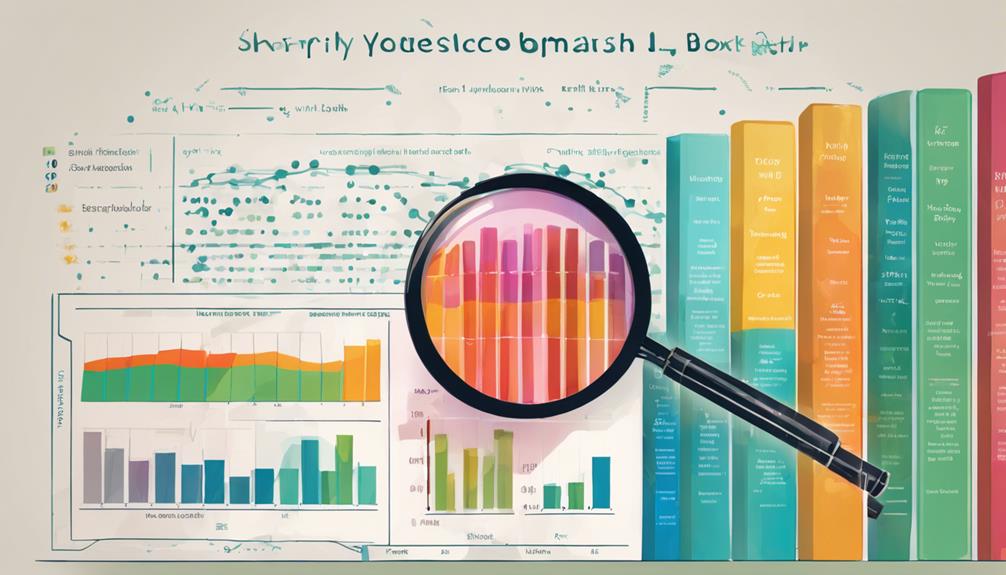Statistics for Biology and Health by Sherri L. Jackson – Summary and Review

'Statistics for Biology and Health' by Sherri L. Jackson is a comprehensive guide for statistical analysis in biology and health sciences. It seamlessly blends theory and practical applications, making it an invaluable resource for students and professionals. The book helps readers navigate complex data landscapes effectively.
Key Takeaways
- Integrates theoretical and practical aspects for comprehensive understanding.
- Emphasizes data analysis, experimental design, and visualization in biology and health.
- Enhances statistical literacy for informed decision-making and reliable research outcomes.
- Fosters active learning through technology integration and real-world examples for practical statistical applications.
Author Background
The author's extensive research experience and deep understanding of statistical methods in biology and health distinguish them as a prominent figure in the field. Sherri L. Jackson holds a Ph.D. in Biostatistics from a prestigious university, where she conducted groundbreaking research on the application of statistical models in epidemiology. Her academic background showcases a profound knowledge of both the theoretical underpinnings and practical implications of statistical analyses in the domain of biology and health.
Jackson's credentials include numerous publications in esteemed scientific journals, where her work has notably contributed to advancing the field of biostatistics. With a keen eye for detail and a passion for unraveling complex data patterns, she's earned recognition for her innovative approaches to analyzing biological and health-related datasets. Jackson's academic journey hasn't only equipped her with the necessary skills to navigate the intricate world of statistics but also instilled in her a commitment to sharing her expertise with students and fellow researchers.
Book Overview
Sherri L. Jackson's profound expertise in statistical methods for biology and health sets a solid foundation for delving into the thorough overview of the book. 'Statistics for Biology and Health' by Jackson is a detailed guide that seamlessly integrates theoretical knowledge with practical applications through real-world examples. The book emphasizes not only conceptual understanding but also the development of practical skills important for applying statistical methods in the fields of biology and health.
Readers can expect a well-organized approach that simplifies complex statistical concepts, making them accessible and applicable. Jackson's writing style is engaging, fostering a deeper understanding of statistical methodologies by illustrating their relevance in research and decision-making processes. By incorporating practical examples throughout the book, Jackson guarantees that readers develop the necessary skills to analyze data effectively and draw meaningful conclusions.
Key Statistical Concepts
At the heart of statistical analysis lies the understanding of data analysis methods and the significance of statistical findings. These key concepts serve as the foundation upon which researchers build their studies and draw meaningful conclusions.
Data Analysis Methods
Exploring fundamental statistical concepts is essential for mastering data analysis methods in the field of biology and health. Data interpretation, statistical methods, experimental design, and data visualization are important components of this process.
Understanding how to analyze and interpret data is fundamental in drawing meaningful conclusions that can impact research outcomes greatly. By employing statistical methods effectively, researchers can uncover trends, patterns, and relationships within their data sets.
Moreover, proper experimental design guarantees the validity and reliability of study results. Data visualization plays a crucial role in presenting findings in a clear and understandable manner.
Statistical Significance Importance
Understanding the importance of statistical significance is paramount in the world of biology and health research. It serves as a cornerstone for drawing meaningful conclusions and making informed decisions based on data analysis. Hypothesis testing, p-values, confidence intervals, and effect sizes are key concepts that researchers rely on to determine the reliability and relevance of their findings.
Hypothesis testing allows scientists to assess the strength of their proposed explanations, with p-values indicating the likelihood of obtaining results by chance. Confidence intervals provide a range within which the true value of an effect is likely to lie, offering a more nuanced understanding of the data. Effect sizes quantify the magnitude of the relationship between variables, aiding in the interpretation of research outcomes with greater clarity and depth.
Application in Biology
In the domain of biology, statistical methods serve as indispensable tools for analyzing complex biological phenomena and drawing meaningful conclusions. When applied thoughtfully, statistical analyses can unravel the intricacies of life processes, providing valuable insights that drive scientific progress.
- Experimental Design: Through meticulous experimental design, researchers can control variables, minimize bias, and guarantee the reliability of their findings. This foundational step sets the stage for robust statistical analysis.
- Hypothesis Testing: By formulating clear hypotheses and subjecting them to rigorous statistical tests, biologists can determine the validity of their ideas and make informed decisions based on evidence.
- Data Interpretation: Statistical tools enable the interpretation of vast amounts of biological data, distilling patterns and relationships that may not be immediately apparent to the naked eye.
- Predictive Modeling: Utilizing statistical models, biologists can forecast trends, simulate scenarios, and make informed predictions about future biological outcomes.
Application in Health Sciences
The application of statistical methods in the domain of Health Sciences is instrumental in analyzing complex health-related data and deriving evidence-based insights to guide medical advancements. In the domain of public health, statistics play a critical role in evaluating the prevalence of diseases, identifying risk factors, and evaluating the impact of interventions. By analyzing large datasets, researchers can uncover patterns and trends that inform public health policies and initiatives aimed at improving community well-being.
Additionally, in clinical research, statistical analysis is fundamental for evaluating the effectiveness of treatments, evaluating patient outcomes, and determining the safety of medical interventions. Through rigorous statistical methods, researchers can draw meaningful conclusions from clinical trials, ensuring that healthcare decisions are based on solid evidence.
Pedagogical Approach
Embracing an interactive teaching method that fosters student engagement and critical thinking is essential in the pedagogical approach for Statistics for Biology and Health. By implementing active learning strategies, educators can create an environment where students are active participants in their learning journey, leading to deeper comprehension and retention of statistical concepts.
- Hands-On Activities: Providing hands-on activities such as data collection and analysis projects can enhance student understanding and application of statistical methods.
- Collaborative Learning: Encouraging group work and discussions allows students to learn from each other, fostering a sense of community and shared knowledge.
- Real-World Applications: Incorporating real-world examples from the field of biology and health sciences helps students see the relevance of statistics in their future careers.
- Technology Integration: Leveraging technology tools for data visualization and analysis can make learning more interactive and engaging for students.
Pros and Cons
Examining the pros and cons of statistics in biology and health can shed light on its intricate nature. Understanding both the strengths and weaknesses allows for a thorough evaluation of its applications.
Strengths and Weaknesses
Exploring the strengths and weaknesses of statistics in biology and health reveals both the power and limitations of quantitative analysis in these fields. Statistics offer a valuable toolkit for researchers, clinicians, and policymakers, but they also come with certain caveats to bear in mind:
- Pros:
- Provide a systematic approach to data analysis.
- Help in making evidence-based decisions.
- Cons:
- Vulnerable to misinterpretation if not used correctly.
- May oversimplify complex biological phenomena.
Understanding these strengths and weaknesses enables professionals in biology and health to harness the full potential of statistical methods while being mindful of their limitations.
Advantages and Drawbacks
In the domain of statistics for biology and health, a nuanced understanding of the advantages and drawbacks is crucial for leveraging the full potential of quantitative analysis in these fields.
One of the pros of utilizing statistics in biology and health is the ability to identify trends and patterns that may not be apparent through qualitative analysis alone. This can lead to groundbreaking discoveries and advancements in medical treatments. Additionally, statistical methods allow for the quantification of uncertainty, providing researchers with a measure of confidence in their results.
However, a drawback to be mindful of is the potential for misinterpretation or misuse of statistical data, which can lead to false conclusions and misguided decisions. Hence, while statistics offer invaluable insights, careful interpretation and application are essential to guarantee their efficacy.
Positives and Negatives
An astute consideration of the positives and negatives within the landscape of statistics for biology and health reveals a landscape rich with potential for transformative discoveries and cautionary tales alike.
- Pros:
- Statistics provide valuable insights into complex biological systems.
- They help in making informed decisions in healthcare settings.
- Cons:
- Misinterpretation of statistical data can lead to incorrect conclusions.
- Inadequate sample sizes may result in unreliable results.
Through a balanced lens, one can appreciate the power of statistics to revolutionize the fields of biology and health while also acknowledging the importance of careful interpretation and application to avoid pitfalls. Embracing both the pros and cons enables researchers and practitioners to harness the true potential of statistical methods in these critical domains.
Final Thoughts
As the discussion draws to a close, it becomes evident that the insights gained from Statistics for Biology and Health are invaluable for understanding the complex interplay of data in the domain of biology and health. Through a critical analysis, one can appreciate the overall impact of statistical methods in unraveling the mysteries of biological and health-related phenomena. Sherri L. Jackson's work not only equips readers with the tools to navigate and interpret data but also instills a sense of confidence in approaching real-world problems with a statistical mindset.
In the domain of biology and health, where decisions can have profound consequences, the ability to analyze data accurately is paramount. Statistics for Biology and Health serves as a beacon of knowledge, guiding individuals through the intricate web of information and enabling them to make informed choices. By fostering a deeper understanding of statistical concepts, this book empowers readers to engage with research findings critically and to contribute meaningfully to the fields of biology and health.
The journey through Statistics for Biology and Health culminates in a newfound appreciation for the significance of statistics in shaping our understanding of the natural world.
Frequently Asked Questions
Are There Any Real-World Case Studies or Examples Provided in the Book to Help Illustrate the Statistical Concepts?
Real world applications, case studies, and practical examples in the book vividly illustrate statistical concepts. The author skillfully integrates these tools and techniques to enhance understanding, making complex topics accessible and applicable.
Does the Book Address the Use of Statistical Software or Tools Commonly Used in Biology and Health Sciences Research?
The book integrates statistical software seamlessly for practical analysis in biology and health sciences. Through practical examples, it illustrates the utilization of these tools, equipping readers with valuable hands-on experience to navigate research complexities effectively.
Are There Any Discussions on Ethical Considerations Related to Statistical Analysis in Biology and Health Sciences?
Exploring ethical considerations within statistical analysis in biology and health sciences, the book incorporates insightful case studies. It probes into the complexities of negotiating ethical dilemmas, providing valuable perspectives for those in the field.
How Does the Book Address the Issue of Reproducibility in Statistical Analysis in the Field of Biology and Health Sciences?
In addressing data reproducibility and research integrity, the book emphasizes methodological robustness for result validation in the field of biology and health sciences. It advocates for transparency and meticulous documentation to guarantee credibility.
Does the Book Provide Any Guidance on Interpreting Statistical Results and Communicating Findings to a Non-Statistical Audience?
When it comes to interpreting results and communicating findings, clarity is key. Providing accessible explanations and using visual aids can greatly enhance understanding. Simplifying complex statistical information guarantees effective communication with a non-statistical audience.










